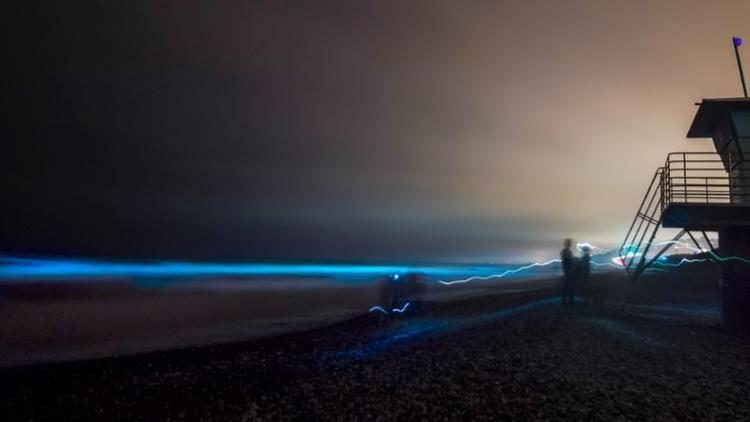
The algae bloom is filled with bioluminescent phytoplankton that lights up when the micro-organisms tumble down the face of waves at and near shore.
At times, the light appears when a surfer paddles his or her board through the surf, or simply walks on the beach.
The phenomenon was first forecast on Monday by Michael Latz, an internationally known bioluminescence expert at UC San Diego's Scripps Institution of Oceanography.
"Based on analysis of a water sample provided by Scripps collector Phil Zerofski, the water contains dense numbers of dinoflagellates especially Ceratium falcatiforme and Lingulodinium polyedra, As L. polyedra (formerly Gonyaulax polyedra) is well known for its bioluminescent displays, there may be some nice light shows tonight," Latz said in an email.
"We're getting reports that the bioluminesence runs from La Jolla to Encinitas, but we don't know how big the red tide is," Latz told the Union-Tribune on Tuesday afternoon.
"The last time we had one was in September 2013, and the last big one was in October 2011."
Latz added that, "We can't predict when these things occur, we don't know how long they will last, when they'll be here, and we really don't understand the dynamics."
The Birch Aquarium at Scripps currently has a display called, "Infinity Cube" that explains the phenomenon.
The "Infinity Cube" of bioluminescence exhibit opens Friday, April 7 at Birch Aquarium, 2300 Expedition Way in La Jolla and will stay up through Dec. 31. The Cube features video projections that London-based artist Iyvone Koo filmed after collaborating with Scripps Institution of Oceanography scientist Michael Latz to better understand the marine microorganisms creating the light. The researchers filmed more than six hours of footage featuring single-celled marine organisms (called dinoflagellates) reacting to various stimulants, such as the human heart beat, music, water flow and air pressure.





Reader Comments
to our Newsletter